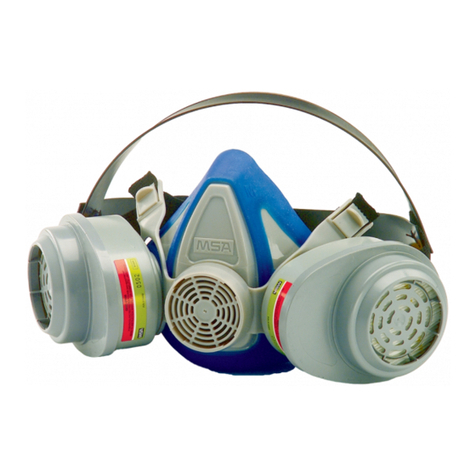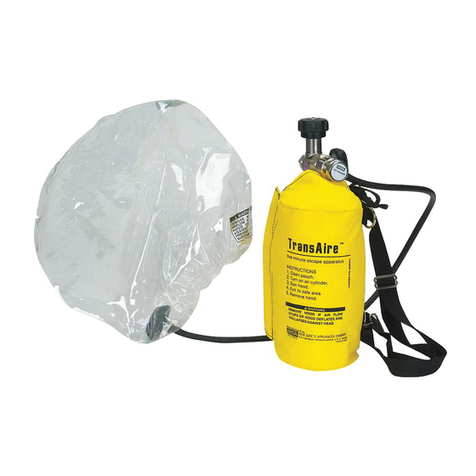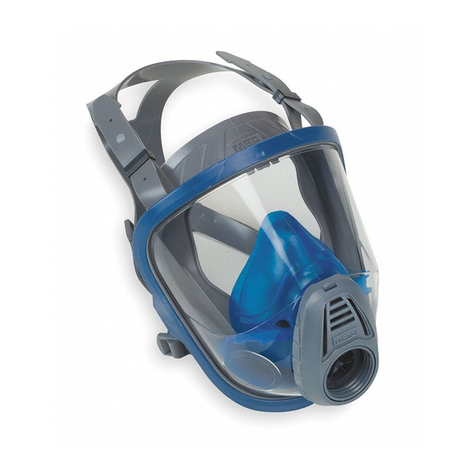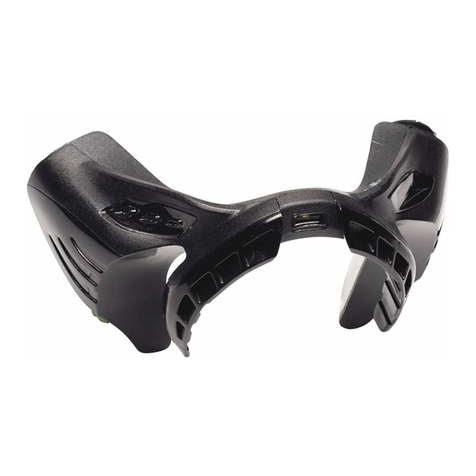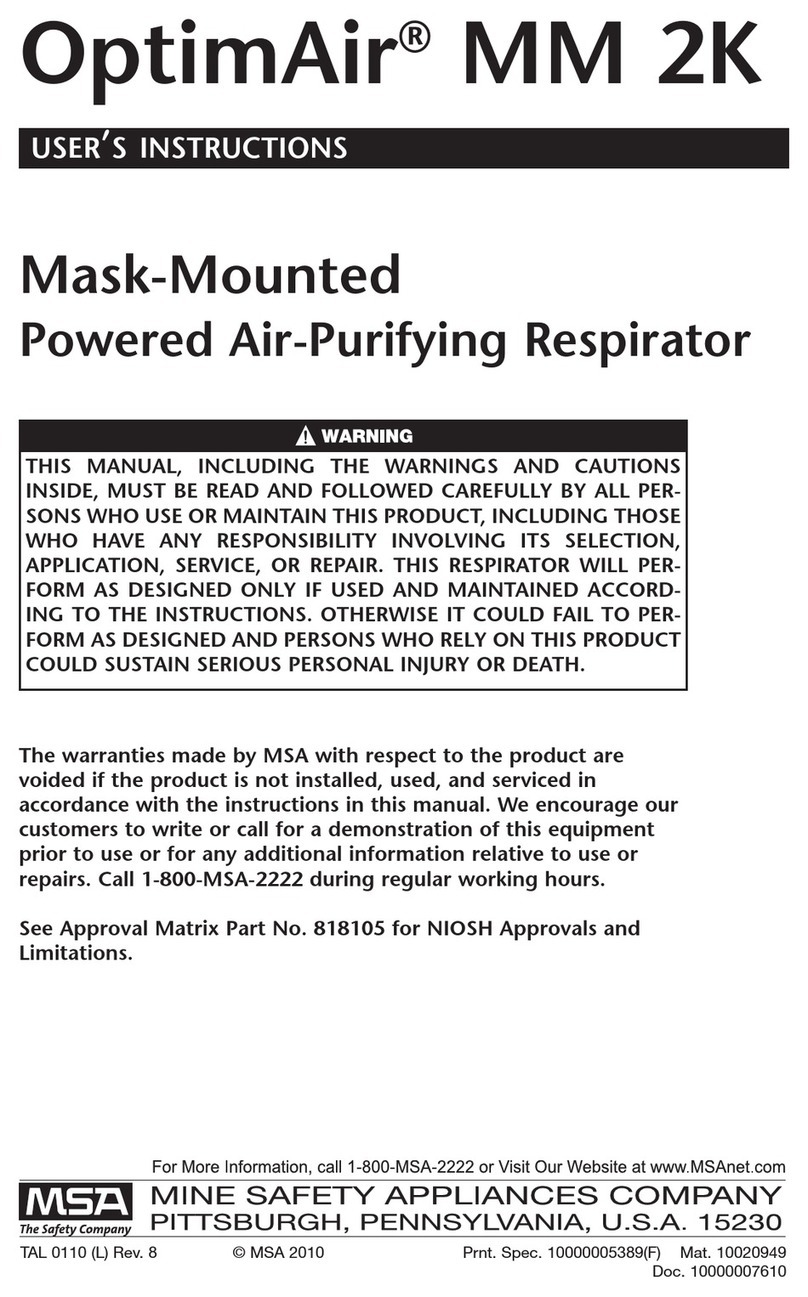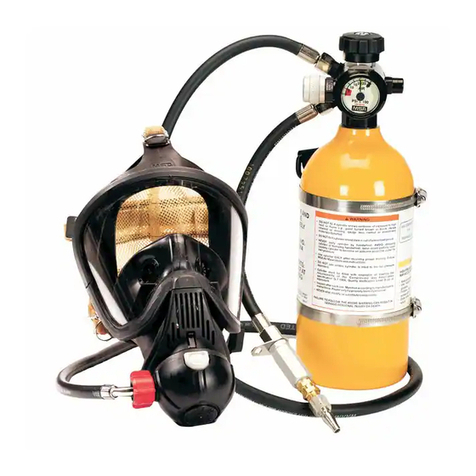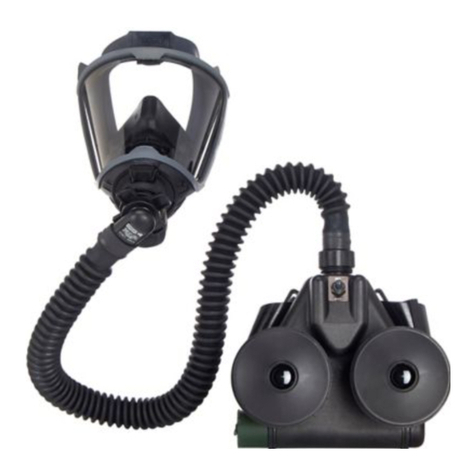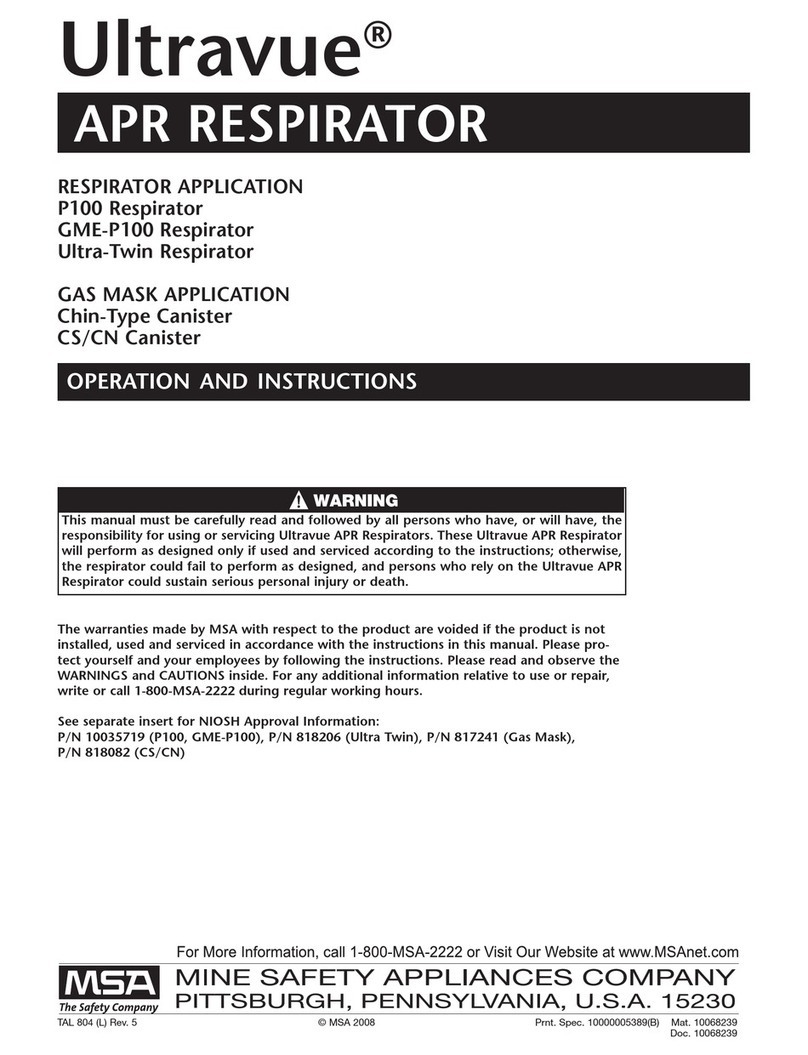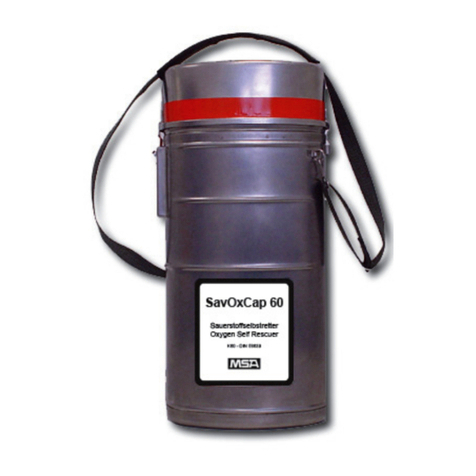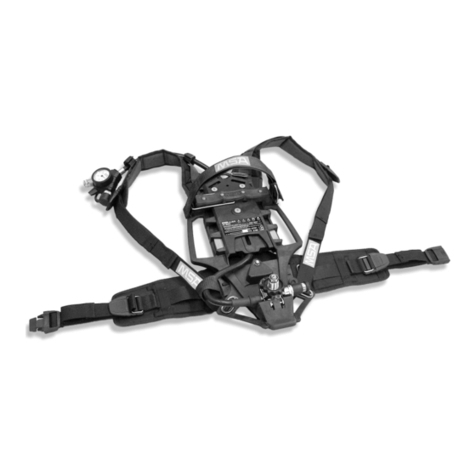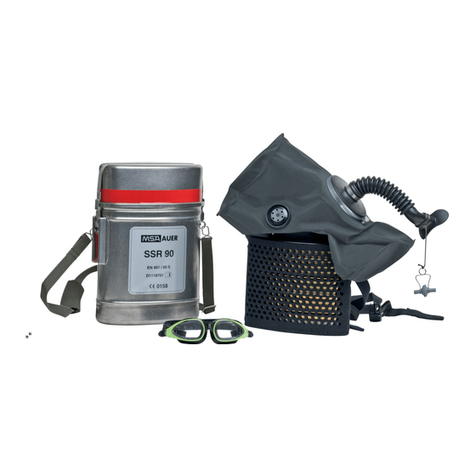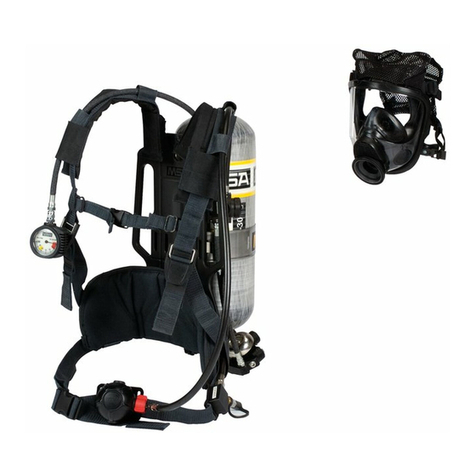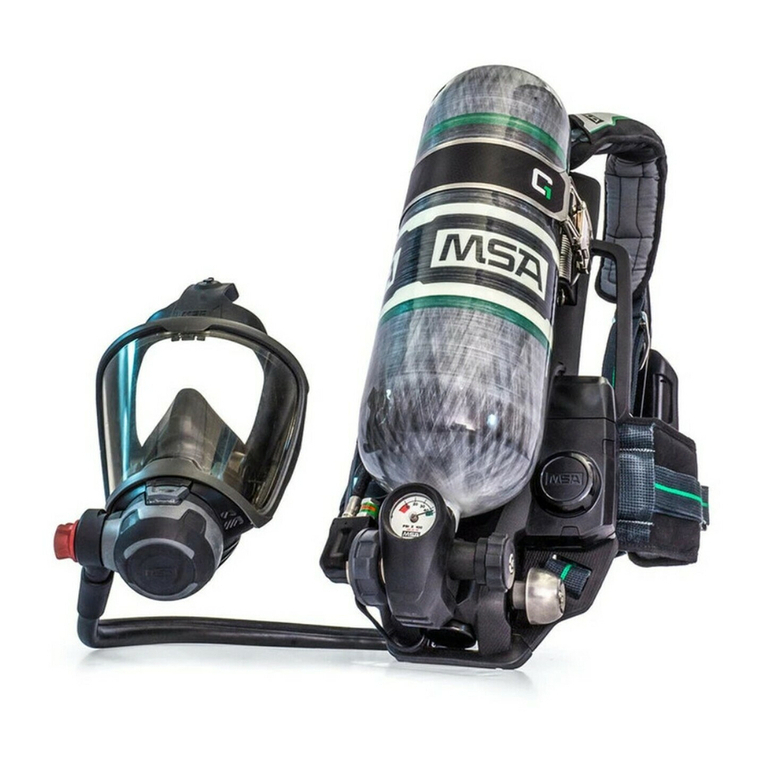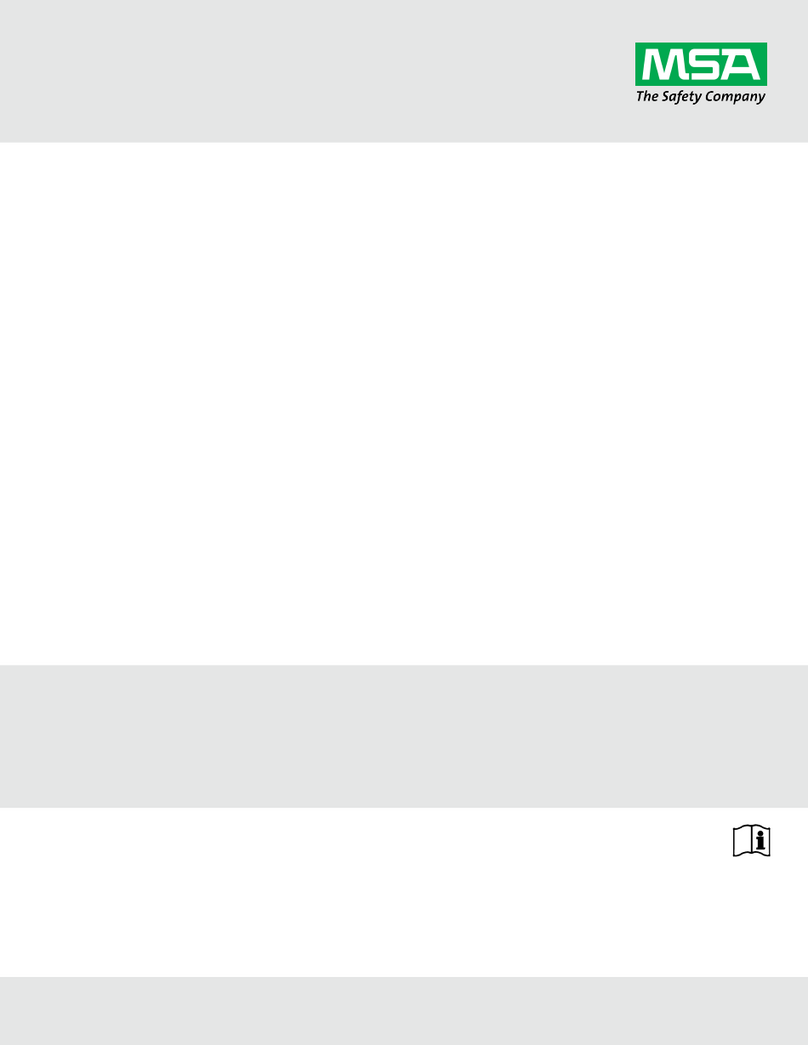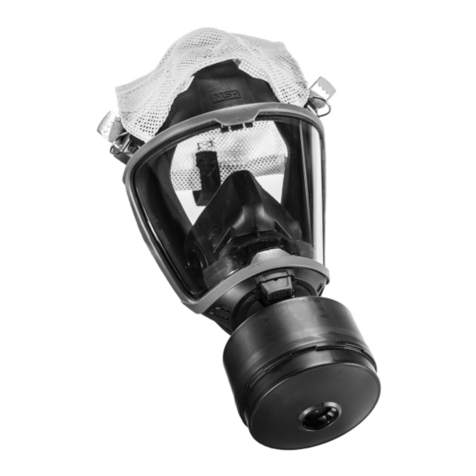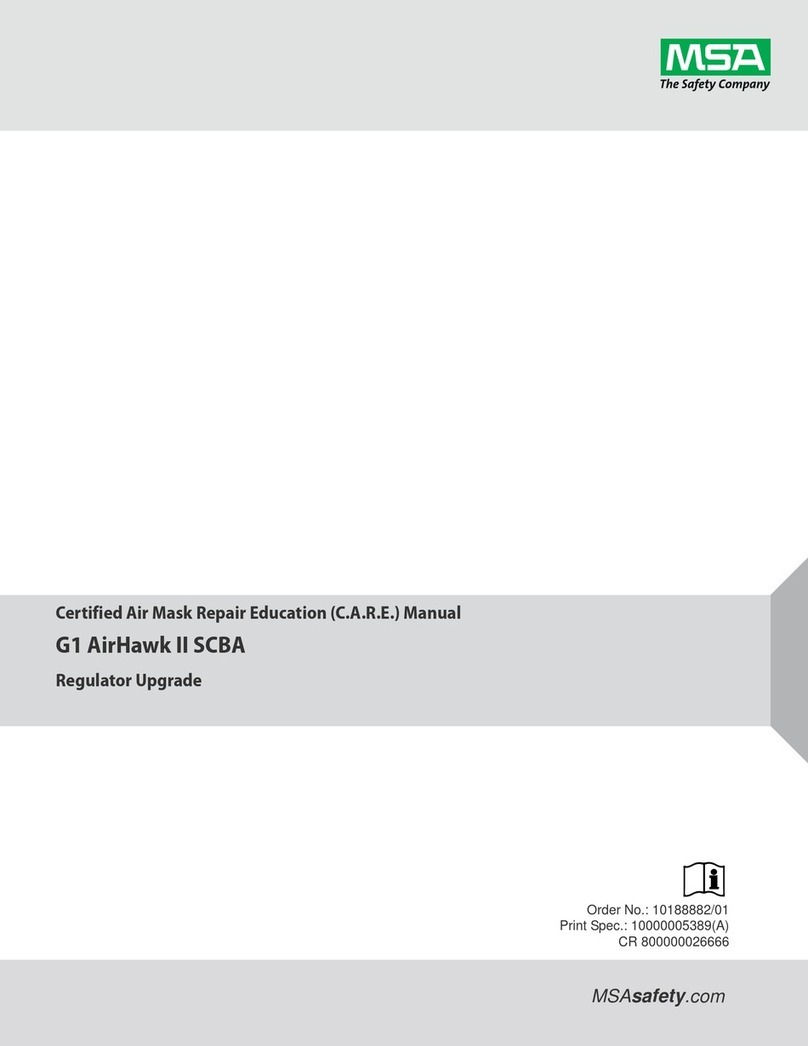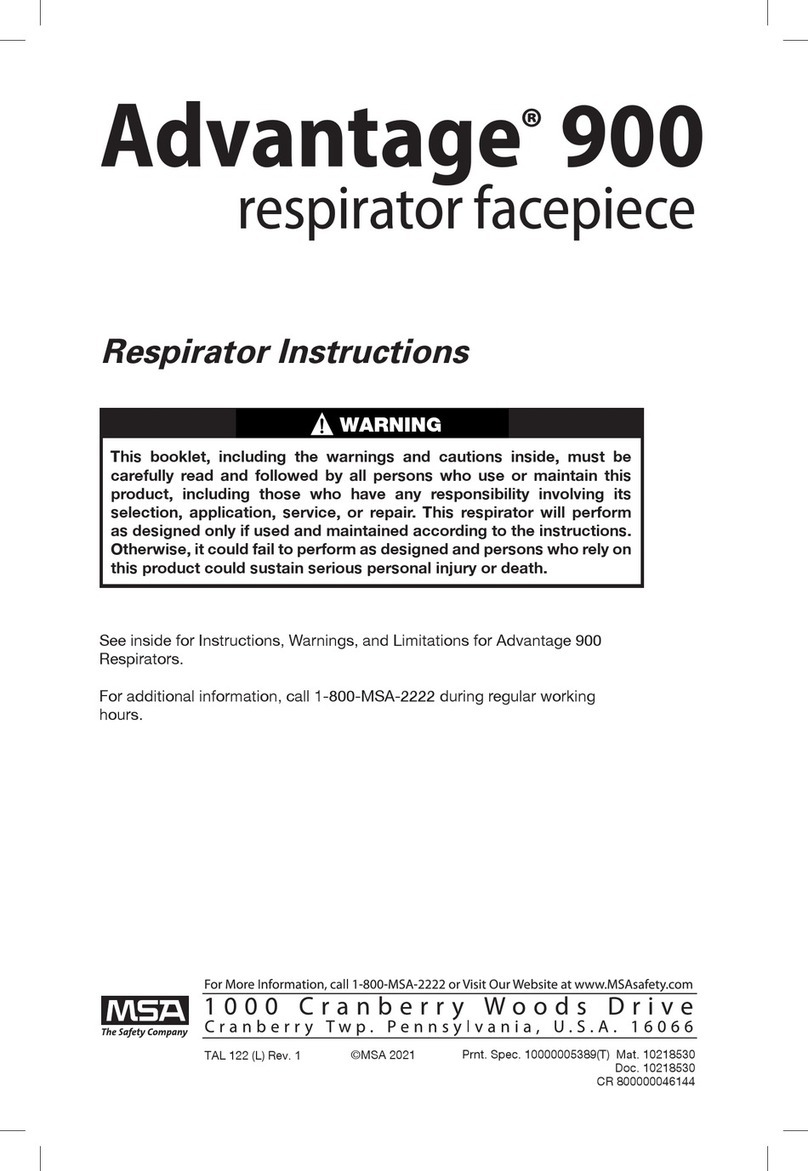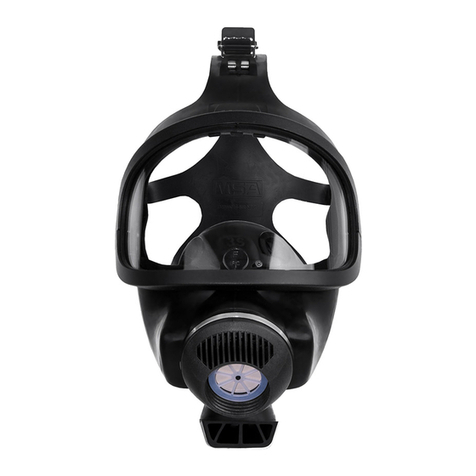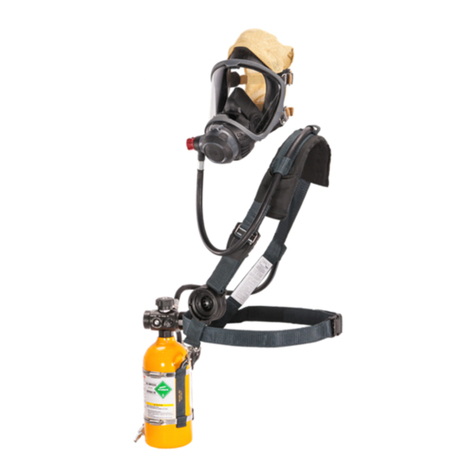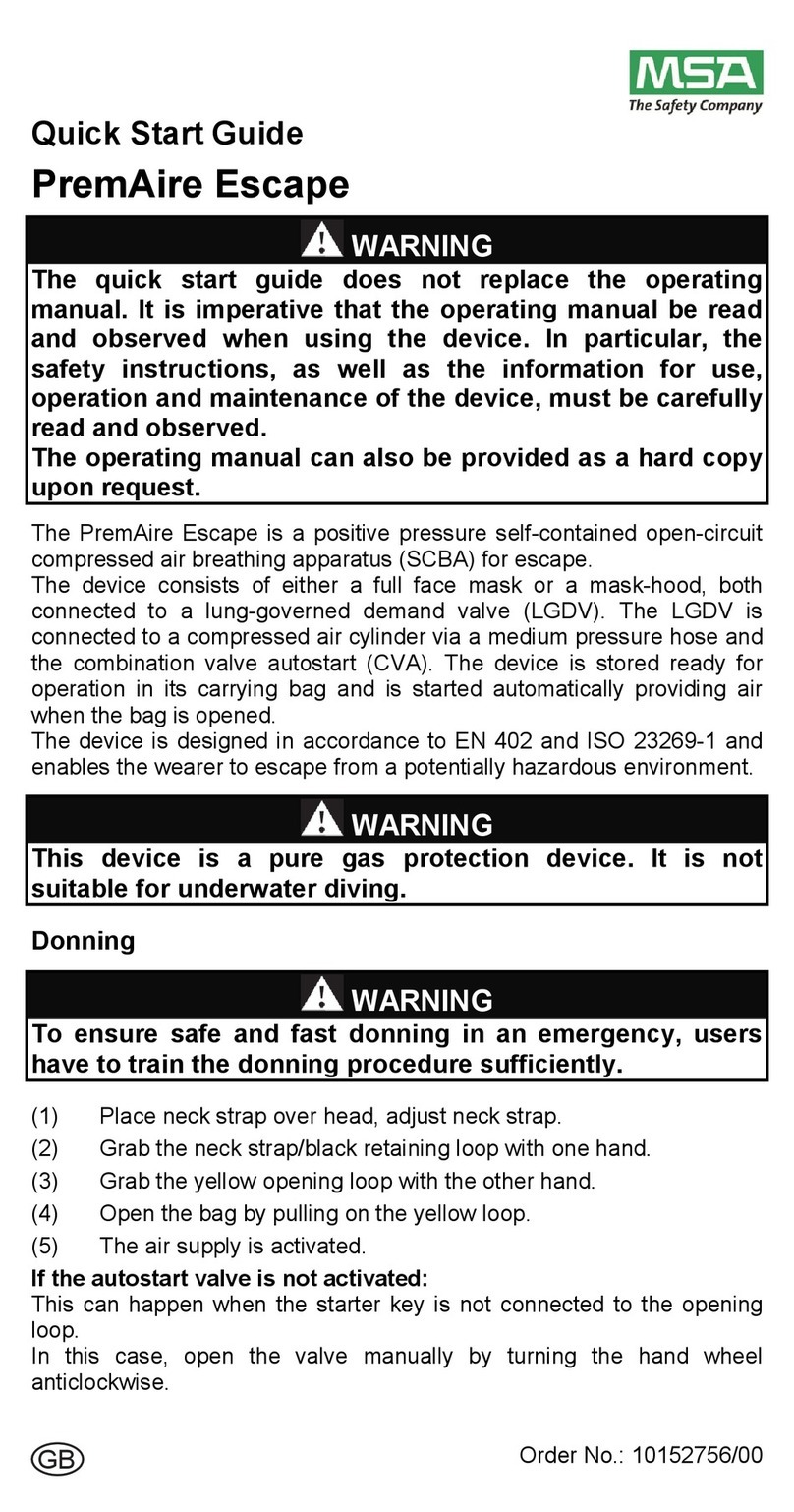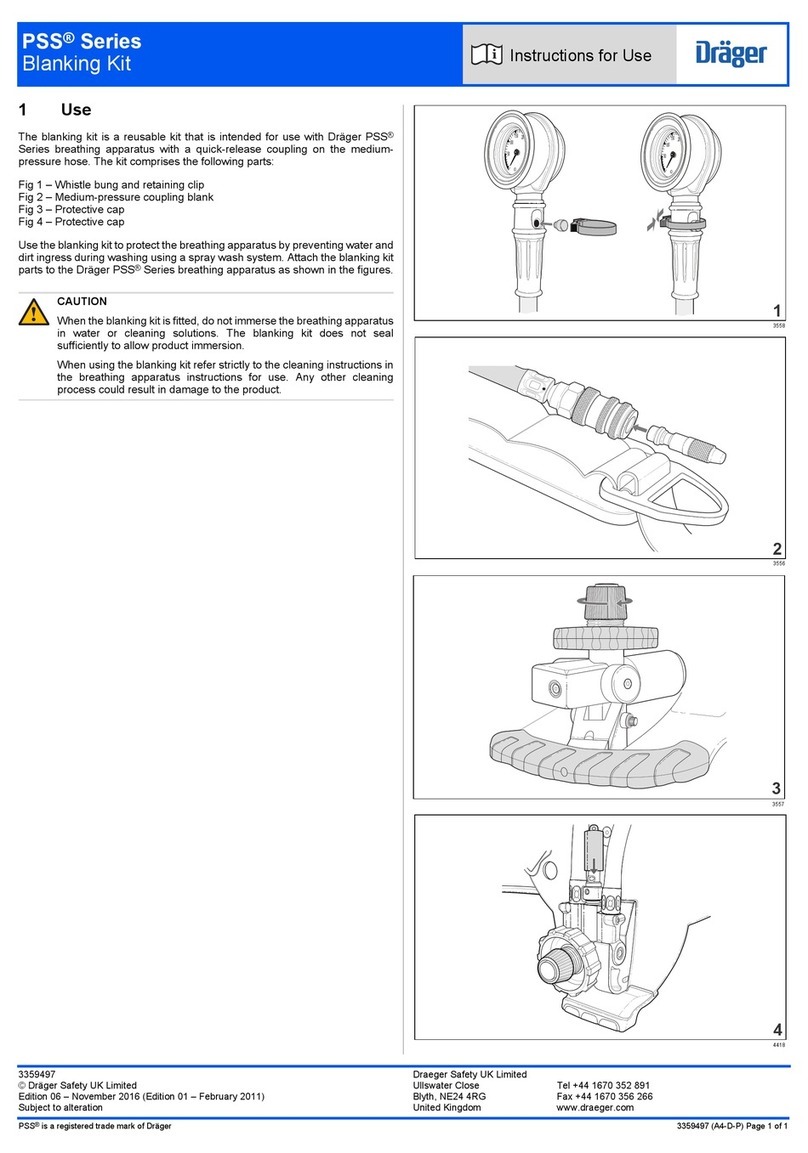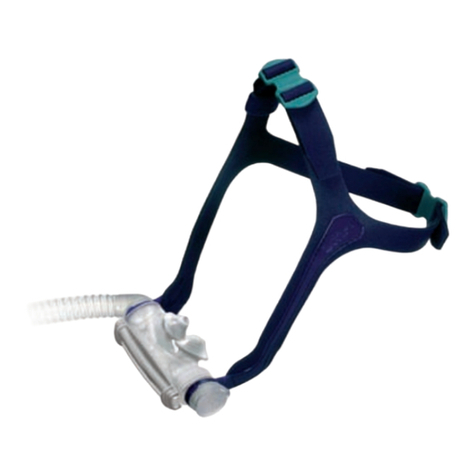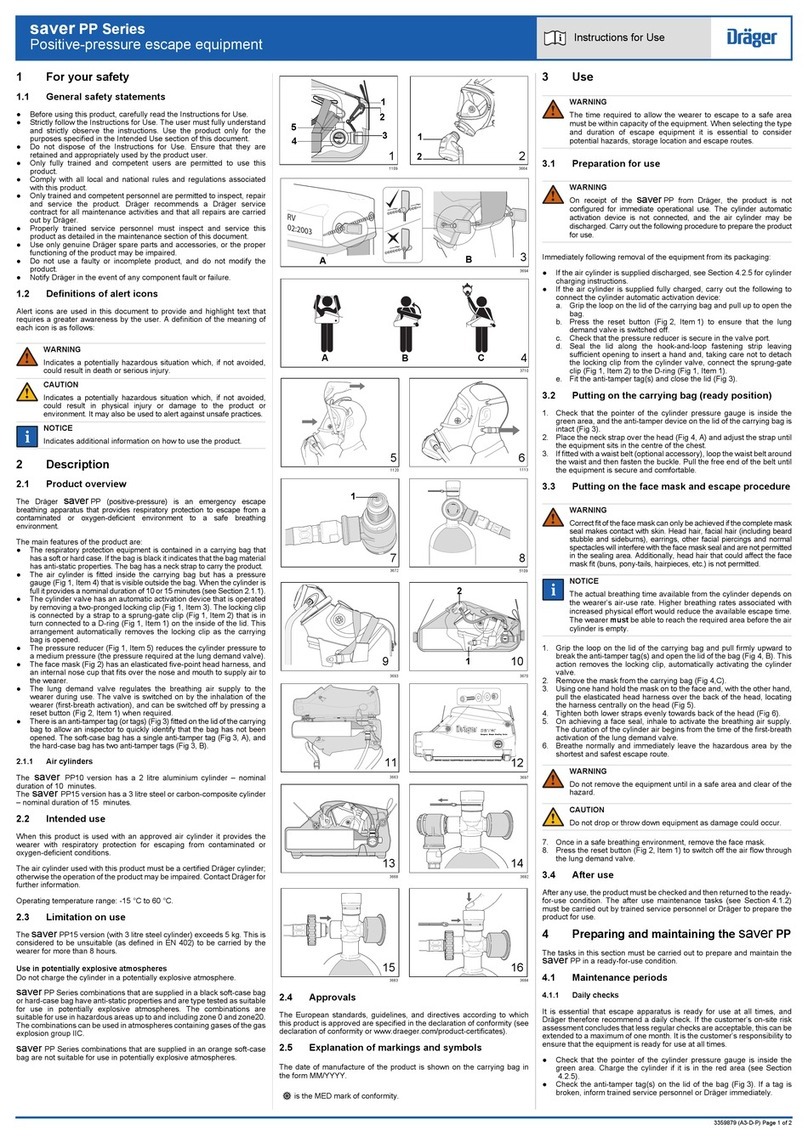
INSTRUCTIONS FOR USE AND CARE
CBRN APPLICATION
• This respirator provi es LIMITED protection. It is
NIOSH approve for respiratory protection against
atmospheres containing CBRN (chemical, biologi-
cal, ra iological, an nuclear) warfare agents; how-
ever, it cannot protect against all possible warfare
agents.
• Some CBRN agents may not present imme iate
effects from exposure, but can result in elaye
impairment, illness, or eath.
• DO NOT use without a complete un erstan ing of
the instructions an limitations for this respirator
an proper training. Misuse can prevent the respi-
rator from provi ing the necessary protection.
• CBRN agents may NOT be etectable by smell or
sight. Don respirator before entering an area sus-
pecte of containing CBRN agent. Follow proce-
ures establishe by proper authorities.
• DO NOT use this respirator beyon eight (8) hours
after initial use in an atmosphere containing CBRN
agents or beyon two (2) hours after initial use in
an atmosphere containing CBRN agents in liqui of
mist form; otherwise agent permeation may occur.
• DO NOT remove respirator until respirator an
clothing are econtaminate ; otherwise exposure
to CBRN agent may result. Follow econtamination
an isposal proce ures establishe by appropri-
ate authorities.
1. An a equate respiratory protection program must
inclu e knowle ge of hazar s, hazar assessment,
selection of proper respiratory protective equip-
ment, instruction an training in the use of equip-
ment, inspection an maintenance of equipment,
an me ical surveillance.
2. This respirator will perform as esigne only if
use an maintaine accor ing to the manufactur-
er's instructions. The Program A ministrator an
the users must rea an un erstan these instruc-
tions before using or servicing this pro uct.
3. If the respirator oes not perform as specifie in
this manual, it must not be use until it has been
checke by authorize personnel.
4. DO NOT alter, mo ify, or substitute any compo-
nents.
5. Inspect the respirator regularly an maintain it
accor ing to the instructions. Repairs must only be
ma e by properly traine personnel.
6. This respiratory protective evice oes not supply
oxygen. Use only in a equately ventilate areas
which conform to the appropriate stan ar .
7. This respirator must be use in conjunction with
the proper canisters for protection against specific
contaminants. If you cannot etermine that the
canisters use with this evice is esigne for the
contaminant, or if you o not know the i entity of
the contaminant, o not use this evice.
8. DO NOT use when concentrations of contaminants
are unknown.
9. DO NOT block the canisters.
10. DO NOT use when appropriate exposure limit (PEL,
REL, TLV, etc.) is not known.
11. Leave the contaminate area imme iately if:
a. Breathing becomes ifficult
b. Dizziness or other istress occurs
c. You taste or smell the contaminant
. You experience nose or throat irritation
e. Instructe by responsible in ivi uals
12. Use strictly in accor ance with the instructions,
labels, an limitations pertaining to this evice.
Follow an establishe canister(s) changeout
sche ule.
13. This respirator may not provi e a satisfactory seal
with certain facial characteristics, such as bear s
or large si eburns that prevent irect contact
between the skin an the sealing surface of the
facepiece. Do not use this facepiece if such con i-
tions exist.
14. DO NOT wear eyeglasses un er the facepiece. The
temples or si ebars on eyeglasses will prevent an
air-tight seal. If you must wear glasses, install the
spectacle kit.
15. The user must perform a respirator fit test
(Quantitative Test or Qualitative Test) an follow all
warnings an limitations specifie .
16. Wear impermeable protective clothing to prevent
exposure to gases an vapors which can poison by
skin absorption.
17. DO NOT use this respiratory protective evice in
explosive atmospheres.
18. DO NOT use for urethane paints or other paints
containing iisocyanates unless an appropriate
canister change-out sche ule is evelope . Due to
their poor warning properties, over exposure can
occur without user awareness an result in severe
permanent amage to the respiratory system. If
unable to evelop an appropriate changeout
sche ule, use an air-supplie respirator or SCBA.
19. The C420 PAPR has no user-serviceable parts
except as instructe in this manual.
20. DO NOT rop the C420 PAPR. If the C420 PAPR is
roppe leave the contaminate area imme iately
an inspect the unit for amage. If the plastic can-
ister or blower housing is cracke it may cause
contaminants to get into the system.
Failure to follow all warnings, instructions, an estab-
lishe protective measures can result in serious per-
sonal injury or eath.
5TAL 804 (L) Rev. 0 - 10086003
